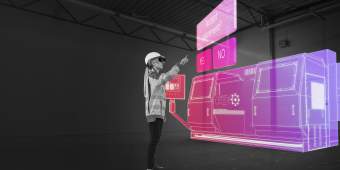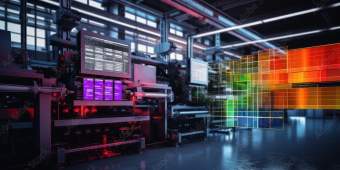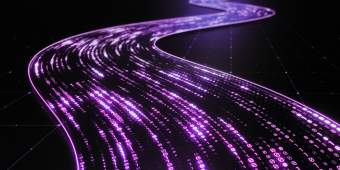In an earlier piece, we told the story of Dickson’s evolution from a legacy manufacturing company to a juggernaut in the industrial Internet of Things (IIoT) space. Through its partnership with TXI, Dickson has been able to develop groundbreaking IIoT applications like DicksonOne, which enables real-time environmental monitoring via wifi-connected data loggers.
What makes Dickson’s IIoT products unique? Behind each solution is a product innovation approach focused on leveraging tech to solve real user problems. As a result, Dickson has given customers more peace of mind about their equipment, inventory, and supplies. And over time, the company has built an organization-wide culture of innovation that has helped it continuously find new ways to deliver value.
When compared with traditionally manufactured products, Dickson’s inspired industrial IoT applications have clear advantages. A product innovation approach enables Dickson to deliver IIoT solutions that people actually use. That’s critical now more than ever. With a recession on the horizon, companies need to focus their resources on the things that customers value most. That effort starts with a user-driven innovation mindset.
In this piece, we’ll use Dickson’s journey to explain three fundamental differences between inspired IIoT applications and traditionally manufactured products. We’ll also look more closely at the innovation culture that inspires each IIoT solution. First, though, let’s establish a definition of inspired IIoT applications.
Background: What is an inspired IIoT application?
In the consumer world, IoT solutions are fairly common. For example, you might use a smart thermostat that dynamically responds to your home’s specific heating and cooling patterns. And with a companion app, you can remotely adjust the temperature while you’re at work or on vacation.
The benefit isn’t just more control. It’s a tech-powered way to optimize your home’s energy efficiency and lower energy costs. Plus, it gives you peace of mind. If you forget to turn off the A / C before leaving for your summer trip, you can do it as soon as you remember, even if that’s 200 miles down the road.
Industrial IoT applications offer similar benefits. They use an array of wifi- or Bluetooth-connected devices to accelerate traditionally manual processes, saving companies time and money and providing everyone peace of mind. With a full network of connected industrial IoT devices, industrial companies can enable things like…
Predictive equipment maintenance.
Automated data collection and analysis.
Remote environmental monitoring.
Industrial IoT solutions are the driving force behind what McKinsey has termed “Industry 4.0”. A growing number of manufacturing companies have been quietly building digital infrastructure in several industries. They’re leveraging IIoT to boost operational efficiencies, reduce the burden on workers, and free up resources to invest elsewhere. Increasingly, this infrastructure is becoming essential to success in the industrial sector.
Dickson’s inspired IIoT applications have made it a leader of Industry 4.0. Let’s explore the key differences between inspired solutions and traditionally manufactured products.
Why inspired IIoT applications outperform traditionally manufactured products
Dickson’s industrial IoT solutions rely on two components: wifi-connected data loggers and the DicksonOne app. The loggers typically monitor variables critical to an ecosystem, like temperature, humidity, or pressure. The DicksonOne app ingests the logger data to enable insights in real-time.
For Dickson’s customers, this kind of environmental monitoring is critical. Many are responsible for highly sensitive products, from vaccines that need to be kept cold to metals that degrade in humid conditions.
These products can become unusable if a refrigerator stops working or the humidity skyrockets in a warehouse. That means lost revenue for the company—and in some cases, harm to end users. One real-world example: Just months after the United States’s COVID-19 vaccine rollout, one company lost 47,000 doses to a climate control outage.
Dickson’s IIoT solutions give its customers the peace of mind they need to operate with confidence. With immediate insights about their product health, customers can proactively respond to situations as they emerge.
Compared with their traditionally manufactured counterparts, inspired IIoT applications like Dickson’s…
Fast-track data gathering and analysis to automate industrial processes and enable real-time insights.
Prioritize customers’ needs to optimize for usability.
Constantly evolve to align with the latest customer data and technology.
In the following sections, we’ll use examples from the DicksonOne ecosystem to take a closer look at each of these benefits.
Reason #1: Inspired IIoT apps fast-track data gathering and analysis
Historically, industrial customers relied on analog data loggers (also known as chart recorders) to monitor their environments. A typical warehouse might have a few dozen loggers throughout (or several dozen when mapping temperatures or identifying hot spots). The problem: these devices often had a finite chart capacity and required manual monitoring and analysis.
These days, many manufacturers have adopted digital loggers. But not every product is wifi-connected – and many don’t create a satisfying experience for data gathering and analysis. These “uninspired” products often…
Present data without context. A device might note that the temperature is out of range for a certain warehouse section. But it might not show the equipment in that section (like a refrigerator) or the assets being monitored (like vaccines).
Make data analytics difficult. Even with access to digital data, customers may not be able to view real-time notifications or helpful visualizations.
Don’t have a companion app. Workers need to be seated at a desktop or laptop to analyze their data.
Ultimately, uninspired IIoT devices make it highly inefficient to turn data into actionable insights. This can lead to the kind of environmental oversight behind the massive COVID-19 vaccine spoilage we mentioned earlier.
But with inspired IIoT devices, companies can overcome these challenges. Pairing wifi loggers with the DicksonOne companion app enables customers to…
Gather continuous, near-infinite digital chart readings. Wifi-connected sensors constantly and automatically convert temperatures to a digital format. What’s more, the number of readings is only limited by the destination’s cloud storage capacity.
Analyze chart readings in real time. Rather than manually analyzing raw temp data hours after it’s gathered, users can view a device’s current reading and whether it’s within range.
Proactively respond to insights. Push notifications allow customers to take preventive action before a crisis arises. For example, the app might notify the user: “Your vaccines have been above the set temperature threshold for one hour. After two hours, these vaccines will no longer be usable.” Instead of correcting a site’s temperature after vaccines spoil, workers can immediately respond within the specified window and save the whole batch.
Here, it’s important to highlight the specific value of a companion mobile app. Many IIoT manufacturers primarily focus on the web experience. In Dickson’s case, that involves visualizing data in a large grid. There’s a lot of information available at once, and most of it is updated asynchronously.
This web-based view is great for looking at the breadth and scope of data in aggregate. But it’s not helpful in situations that require real-time data and insights.
That’s why Dickson has invested in its mobile app experience. With a mobile-optimized interface, customers can immediately get the information they need most. Whether a user’s on the other side of a warehouse or at their child’s hockey game, it’s easy to remotely monitor and regulate an environment.
Reason #2: Inspired IIoT apps prioritize customer needs
In the environmental monitoring space, the “cutting edge” of usability is really quite dull—especially when it comes to traditionally manufactured products.
Take analog data loggers, for example. They require manual operation, maintenance, and data analysis—all of which make for a pretty frustrating user experience.
The same goes for standard IIoT products as well. Many manufacturers build products that require users to export charts and use third-party apps to actually view their data. The overall user experience more often mimics the complexity of analog data processing than, say, the built-for-people experience of using Apple products.
Put simply, these uninspired products translate the analog experience to digital without maximizing all of digital’s capabilities. But the reality is that many users are accustomed to more fully realized – and highly satisfying – IoT experiences. It’s easy to picture a warehouse worker saying, “My Health app already lets me see my step count and activity trends in a single, streamlined view. So why is it so hard to view and analyze my logger data?”
Dickson has kept this perspective in mind when designing IIoT applications. Through its partnership with TXI, Dickson has centered usability in every product leap. From adopting wifi-based loggers to going all-in on mobile, each product advancement aims to streamline users’ lives.
How does Dickson consistently build IIoT solutions that customers love? At every product stage, its team regularly engages with users to understand their expectations and needs. Let’s look at two examples to illustrate.
1. Helping customers meet COVID-19 vaccine regulations
Since the COVID-19 vaccine rollout, government regulations have required twice-daily temperature recordings for all publicly supplied vaccines. In practice, this means someone has to physically stop by each storage unit and confirm that temperatures are within range.
After talking with their healthcare customers, the Dickson team designed report types specifically tailored to this use case. Now, customers can automatically generate two-a-day temperature reports and send them to regulators. While many regulators still require manual checks, DicksonOne enables fast and accurate reporting that can supplement existing compliance practices.
2. Giving customers more control over DicksonOne data
Many of Dickson’s customers use digital tools with granular permissions management. Google Workspace, for example, gives companies tight control over who can access certain apps, files, and data.
Today, the Dickson team is working toward replicating that granularity in DicksonOne. Customers feel more comfortable when they can set clear limits on data access and manipulation.
Reason #3: Inspired IIoT apps constantly evolve thanks to ongoing innovation
Traditionally manufactured products aren’t just difficult to use—they’re also tough to update.
For companies trying to keep pace with the rate of change in today’s world, though, static products are a non-starter.
Here’s where inspired IIoT applications stand out. Thanks to a user-centric digital foundation, these solutions are easier to update to accommodate shifting customer realities.
In recent years, the Dickson team has made several incremental changes to better support its users. Let’s look at three.
A digital calibration certificate repository: Historically, Dickson mailed customers physical calibration certificates alongside their data loggers. These certificates required manual completion and filing to satisfy regulatory requirements. But with recent DicksonOne innovations, users can now download certificates and maintain a digital record on desktop or mobile.
Equipment-based data organization: The DicksonOne app used to organize data according to each logger (e.g., “Logger #1” with X temperature and Y humidity readings). Today, users can track their data against any given piece of equipment, like “Refrigerator #3” in a vaccine storage space. The underlying idea: a pivot toward showing users what their data represents rather than simply where it’s coming from.
React Native-based development: Dickson was an early adopter of React Native, which enables product teams to quickly develop native mobile apps. By embracing this framework, the Dickson team has been able to optimize DicksonOne for speed and ease of use.
As the Dickson team deepens their user engagement, they will continue to align DicksonOne with real user needs.
The “inspiration”: A culture of continuous, data-driven, user-first innovation
We’ve been saying “inspired” IIoT applications a lot in this piece. What we mean by that: apps developed with the value system known as product innovation. Built on design principles and a user-driven, no-assumptions philosophy, this value system fuels continuous innovation to consistently meet users’ needs.
With the right innovation partner, industrial companies can transform their mindset and operations to foster a culture of innovation. That’s exactly what Dickson has done throughout its partnership with TXI.
Of course, this culture shift didn’t happen overnight. A few major milestones tell the story of Dickson’s evolving innovation culture.
1. Embracing user-driven design early on
When the Dickson team first approached TXI, they wanted to optimize their website’s shopping experience for users. The problem: Dickson had no easy way to understand users’ needs.
To help, we designed custom web analytics software that helped Dickson learn more about their users. Then, we used these insights to build a new digital sales channel. With more user engagement data, Dickson could direct customers toward the products they needed most, which boosted sales and customer satisfaction. This user-first approach became the foundation of Dickson’s innovation culture.
2. Triaging product work based on real user needs
One of Dickson’s initial goals with DicksonOne was to replicate the web app’s data charts on mobile. The team wanted a highly interactive chart experience—something that was difficult to execute technically.
But it wasn’t clear whether users even wanted this experience. After gathering user feedback, the team decided to simplify the chart interface. Then, they focused on triaging future efforts based on tangible user needs.
3. Bringing on a dedicated designer
The first two iterations of DicksonOne were primarily engineer-driven. An engineer might mock up a design while implementing a feature, but there wasn’t a dedicated designer to establish a consistent design system.
In its current iteration, the team has a designer to standardize processes and craft a more cohesive user experience. From DicksonOne’s equipment-based organization feature to its app-based repository for calibration certificates, the designer has spearheaded continuous improvements that have skyrocketed DicksonOne’s consistency and usability.
These three milestones were possible thanks to Dickson’s innovation culture. And with each step forward, the company has found new ways to deliver value. The biggest example: becoming a compliance partner for customers.
Over the last few years, Dickson has focused on helping customers use IIoT applications to prepare for audits. Thanks to Dickson’s user-first approach, customers can tap into real-time data and insights without extra work. And because of its culture of ongoing innovation, Dickson can adapt its products to changing regulatory demands.
For industrial companies, a culture like Dickson’s isn’t an option—it’s a necessity.
We’re past the Wild West of IoT, where it’s easy to spend time and money guessing at what users might want.
In this new era of tech, companies have to get more practical about the way they build digital products. And that demands a research-based approach that continuously creates value based on users’ needs. This way, companies can invest in IIoT solutions that make a real impact on users’ lives.
Next in our series: How to find the right IIoT innovation partner
Since 2002, Dickson has embraced a different way of thinking that’s helped it become a leader in IIoT. But to get there, it needed an experienced innovation partner.
In our next piece, we’ll highlight the most important qualities in an innovation partner, from strategic thinking to a collaborative mindset.
If you’d like to start a conversation about embracing a culture of innovation, we’d love to hear from you.




